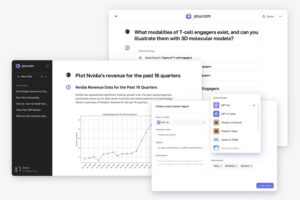
We want to hear from you! Take our quick AI survey and share your insights on the current state of AI, how you’re implementing it, and what you expect to see in the future. Learn More
Microsoft unveiled an interactive demonstration of its new MInference technology on the AI platform Hugging Face on Sunday, showcasing a potential breakthrough in processing speed for large language models. The demo, powered by Gradio, allows developers and researchers to test Microsoft’s latest advancement in handling lengthy text inputs for artificial intelligence systems directly in their web browsers.
MInference, which stands for “Million-Tokens Prompt Inference,” aims to dramatically accelerate the “pre-filling” stage of language model processing — a step that typically becomes a bottleneck when dealing with very long text inputs. Microsoft researchers report that MInference can slash processing time by up to 90% for inputs of one million tokens (equivalent to about 700 pages of text) while maintaining accuracy.
“The computational challenges of LLM inference remain a significant barrier to their widespread deployment, especially as prompt lengths continue to increase. Due to the quadratic complexity of the attention computation, it takes 30 minutes for an 8B LLM to process a prompt of 1M tokens on a single [Nvidia] A100 GPU,” the research team noted in their paper published on arXiv. “MInference effectively reduces inference latency by up to 10x for pre-filling on an A100, while maintaining accuracy.”
Hands-on innovation: Gradio-powered demo puts AI acceleration in developers’ hands
This innovative method addresses a critical challenge in the AI industry, which faces increasing demands to process larger datasets and longer text inputs efficiently. As language models grow in size and capability, the ability to handle extensive context becomes crucial for applications ranging from document analysis to conversational AI.
Countdown to VB Transform 2024
Join enterprise leaders in San Francisco from July 9 to 11 for our flagship AI event. Connect with peers, explore the opportunities and challenges of Generative AI, and learn how to integrate AI applications into your industry. Register Now
The interactive demo represents a shift in how AI research is disseminated and validated. By providing hands-on access to the technology, Microsoft enables the wider AI community to test MInference’s capabilities directly. This approach could accelerate the refinement and adoption of the technology, potentially leading to faster progress in the field of efficient AI processing.
Beyond speed: Exploring the implications of selective AI processing
However, the implications of MInference extend beyond mere speed improvements. The technology’s ability to selectively process parts of long text inputs raises important questions about information retention and potential biases. While the researchers claim to maintain accuracy, the AI community will need to scrutinize whether this selective attention mechanism could inadvertently prioritize certain types of information over others, potentially affecting the model’s understanding or output in subtle ways.
Moreover, MInference’s approach to dynamic sparse attention could have significant implications for AI energy consumption. By reducing the computational resources required for processing long texts, this technology might contribute to making large language models more environmentally sustainable. This aspect aligns with growing concerns about the carbon footprint of AI systems and could influence the direction of future research in the field.
The AI arms race: How MInference reshapes the competitive landscape
The release of MInference also intensifies the competition in AI research among tech giants. With various companies working on efficiency improvements for large language models, Microsoft’s public demo asserts its position in this crucial area of AI development. This move could prompt other industry leaders to accelerate their own research in similar directions, potentially leading to a rapid advancement in efficient AI processing techniques.
As researchers and developers begin to explore MInference, its full impact on the field remains to be seen. However, the potential to significantly reduce computational costs and energy consumption associated with large language models positions Microsoft’s latest offering as a potentially important step toward more efficient and accessible AI technologies. The coming months will likely see intense scrutiny and testing of MInference across various applications, providing valuable insights into its real-world performance and implications for the future of AI.
Source link




